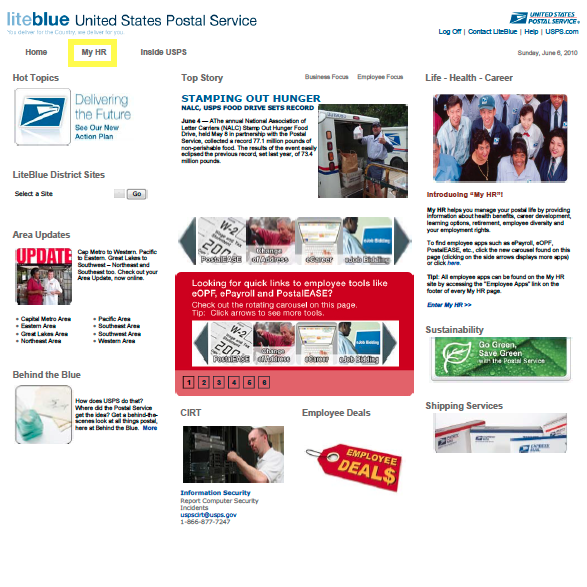Refund of FERS Employee Retirement Contributions

When an employee covered by FERS leaves federal service, he or she may be entitled to receive a refund of their contributions to FERs. This article discusses issues related to such a refund.
In particular, it discusses: (1) the concept of a “lump sum credit” under FERS; (2) the content of a lump sum credit payment (FERS refund); (3) eligibility requirements for the payment of a lump sum credit; (4) the consequences to FERS-covered employees who request and receive a lump sum credit payment or FERS refund ; (5) the effect of debts due to the U.S. government on the lump sum payment; (6) spousal/former spousal notification; and (7) the procedures for obtaining a lump sum credit payment or FERS refund.
Lump Sum Credit
A lump sum credit under FERS is defined as the “unrefunded amount” of a FERS-covered employee’s contribution to the FERS Retirement and Disability Fund. The lump sum credit consists of:
- FERS basic annuity retirement contributions deducted from basic pay — 0.8 percent of an employee’s after-taxed wages;
- CSRS interim plan employee contributions, if any;
- CSRS Offset employee contributions — 0.8 percent of the employee’s after-tax wages, if any;
- Any civilian deposit or deposit for post-1956 military service; and
- Interest.
The following individuals are eligible for a lump sum credit: (1) a separated employee who is no longer covered by FERS; (2) the beneficiary(ies) of a deceased employee, former employee, annuitant or survivor annuitant, if the full amount of retirement contributions has not been paid out in the form of an annuity or survivor annuity at the time of death; and (3) the beneficiary(ies) of a deceased employee, former employee or annuitant only if there is no survivor annuitant.
FERS Refund
The same eligibility requirements under CSRS for a refund of an employee’s CSRS contributions also apply to FERS refunds. In order for a former FERS employee to receive a refund of FERS contributions: (1) the employee must be separated from federal service for at least 31 consecutive days; (2) the employee must not be reemployed in a position subject to CSRS or FERS deductions at the time the application is filed; (3) he or she cannot be eligible to receive an annuity within 31 days after filing the application; and (4) they must comply with the requirements for notification of a spouse or former spouse.
A FERS refund is a lump sum payment to a former employee or to an employee no longer covered by FERS of the amount of his or her lump sum credit. The FERS refund includes payment of all: (1) FERS basic annuity deductions from salary; (2) CSRS interim plan employee contributions; (3) CSRS Offset employee contributions; (4) deposits for civilian time (“non-deduction” service or temporary time), if any; (5) military service credit deposit, if any; and (5) interest.
When an employee who has transferred to FERS from CSRS has a future entitlement to a CSRS annuity component but requests a refund, the Office of Personnel Management (OPM) will pay the employee’s CSRS contributions to the employee’s credit, including the voluntary contribution program (VCP) made before the employee switched to FERS.
The Consequences of Refunded FERS Contributions
Payment of a refund of an employee’s FERS contributions permanently voids any retirement rights based on the period of FERS service that the refund covers. In the event that the departed employee returns to federal service under FERS, the employee cannot repay or redeposit the refunded contributions in order to reestablish credit for the refunded FERS service.
FERS service covered by a refund therefore: (1) cannot be redeposited if the employee returns to federal service; (2) is not creditable for eligibility for a FERS annuity (length of service requirement); and (3) cannot be used for FERS annuity computation purposes.
However, refunded FERS service is creditable for annual leave, RIF and Thrift Savings Plan (TSP) vesting purposes. This means that a FERS employee who left federal service, receives a refund of FERS contributions, and then returns to federal service will have one service computation date (SCD) for retirement purposes and a different SCD for annual leave and TSP purposes.
The payment of a refund of a prior FERS deposit — for “non-deduction” service or temporary time performed prior to Jan 1, 1989 — is treated as a refund of FERS employee contributions and permanently voids any retirement rights that are based on the period(s) of service covered by the payment.
The refund of a redeposit covering service performed under CSRS rules — but now treated under FERS rules — is also treated as a refund of FERS contributions and permanently voids any retirement rights that are based on the period(s) of service covered by the payment. Payment of a refund of CSRS contributions included in a CSRS annuity component is made under CSRS rules.
When an employee with at least five years of CSRS service who transferred from CSRS to FERS (a “Trans”FERS employee) retires and is eligible for an annuity, the years covering refunded CSRS service time after October 1, 1990 may only be used for the purpose of retirement eligibility. Those years will not be used for CSRS annuity computation purposes unless the individual re-deposits the refund of contributions that are attributed to CSRS service, plus interest.
A refund is subject to any properly certified and timely request for recovery of a valid debt due the United States government. These debts include unpaid federal income taxes, income tax penalties and interest charges.
The requirement for a FERS notification to a spouse or former spouse differs significantly from the CSRS requirements. Under FERS, the date of the divorce is immaterial. The notification requirement applies even though the marriage may have occurred before the employee’s FERS coverage or federal employment began.
Agencies are responsible for advising employees of how much creditable civilian service they have. Prior refunded FERS service and “non-deduction service” (temporary time) performed on or after Jan. 1, 1989 are not included in determining if the employee has 18 months of creditable civilian service.
An applicant for a FERS refund must complete and submit Form SF 3106 (Application for Refund of Retirement Deductions under FERS – downloadable from www.opm.gov/forms/html/sf.asp) to the Office of Personnel Management (OPM). A completed Form SF 3106 will be submitted to the departed employee’s agency if the employee has been separated from his or her agency for 30 days or less. If the former employee has been separated from his agency for more than 30 days, the application must be mailed to:
Office of Personnel Management
Federal Employees Retirement System
Attn: REFUNDS
Boyars, PA 16017
If the employee wants a refund of only the CSRS contributions, then a signed statement must be attached to form SF 3106 stating this request.
Form SF 3106A (included as part of Form SF 3106) is required to notify of a current or former spouse of the employee’s request.
No interest is paid on refunded FERS contributions if the service covered by the contributions is one year or less or for a fractional part of a month. No interest is payable on prior CSRS contributions if the covered service would be included in a CSRS annuity component.
Interest on refunded FERS contributions is compounded annually through the last day of the month preceding the date OPM makes payment. The interest rate is determined annually by the U.S. Department of the Treasury, based on the average yield of new investments purchased by the FERS retirement and disability fund during the previous fiscal year.








